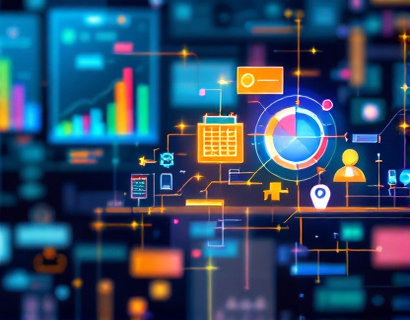AI-Driven Mental Health Insights: Empowering Users with Specialized Chatbot Services
The integration of artificial intelligence in mental health services has opened new avenues for providing specialized insights and support to a diverse audience. An AI-driven chatbot designed to offer specialized information about psychiatric services and the mental health industry represents a significant advancement in this field. This technology ensures that content is accurate, safe, and accessible to various user groups, including children, students, educators, and healthcare professionals. The primary goal of such a platform is to empower users to engage with mental health topics confidently and responsibly, fostering a more informed and supportive community.
Understanding the Need for Specialized Mental Health Information
Mental health is a critical aspect of overall well-being, yet it remains a topic shrouded in stigma and misunderstanding. The demand for reliable and accessible mental health information is higher than ever, especially with the increasing awareness of mental health issues among different demographics. Traditional sources of information, such as medical journals and professional consultations, often lack the accessibility and immediacy required by the general public. An AI-driven chatbot addresses this gap by providing timely, accurate, and tailored insights into psychiatric services and mental health topics.
Features of an AI-Driven Mental Health Chatbot
The chatbot is designed with several key features to ensure it meets the diverse needs of its users:
- Content Verification: All information provided by the chatbot is rigorously verified to ensure accuracy and safety. This is particularly crucial when dealing with sensitive topics like mental health, where incorrect information can have serious consequences.
- User-Centric Design: The chatbot is tailored to be user-friendly, with interfaces that cater to different age groups and levels of expertise. For instance, a simplified version is available for children and students, ensuring that the content is both engaging and understandable.
- Comprehensive Knowledge Base: The chatbot has access to a vast and up-to-date knowledge base covering various aspects of mental health, including common disorders, treatment options, preventive measures, and resources for support.
- Interactive Engagement: Users can interact with the chatbot through natural language processing, making the experience more personal and effective. The chatbot can answer queries, provide recommendations, and guide users to appropriate resources based on their specific needs.
Supporting Diverse User Groups
The chatbot is designed to serve a wide range of users, each with unique information needs:
Children and Students
For younger users, the chatbot offers a safe and educational environment. The content is age-appropriate, focusing on basic mental health concepts, recognizing signs of distress, and knowing where to seek help. Interactive elements like quizzes and games make learning engaging, helping to destigmatize mental health discussions among young people.
Educators
Educators can use the chatbot as a valuable resource to better understand mental health issues affecting their students. The chatbot provides insights into how mental health impacts learning and behavior, offering strategies for creating supportive classroom environments. It also offers guidance on identifying students in need of additional support and connecting them with appropriate services.
Healthcare Professionals
Healthcare professionals, including doctors, nurses, and therapists, can benefit from the chatbot's in-depth information on the latest psychiatric treatments, research findings, and best practices. The chatbot can also serve as a tool for continuing education, helping professionals stay updated on industry developments and expand their knowledge base.
Mental Health Enthusiasts and the General Public
For individuals interested in mental health, the chatbot provides a wealth of information on various topics, from understanding different disorders to exploring treatment options and self-care techniques. It serves as a starting point for those looking to learn more about mental health and how to support themselves or others.
Ensuring Content Accuracy and Safety
The accuracy and safety of the information provided by the chatbot are paramount. To achieve this, the platform employs several measures:
First, all content is created and reviewed by mental health professionals, ensuring that the information is based on the latest research and clinical practices. Second, the chatbot uses advanced algorithms to cross-verify information from multiple reliable sources, reducing the risk of misinformation. Third, user feedback and reports are actively monitored to identify and correct any inaccuracies promptly.
For children and students, the chatbot adheres to strict guidelines to ensure the content is not only accurate but also appropriate for their age group. Sensitive topics are handled with care, and resources for further help are provided in a way that is both supportive and non-intimidating.
Promoting Confident and Responsible Engagement
The chatbot is designed to empower users to engage with mental health topics confidently and responsibly. Here are some ways it achieves this:
First, by providing accurate and reliable information, the chatbot helps users make informed decisions about their mental health and the health of others. This is particularly important in a field where misinformation can lead to harmful outcomes.
Second, the chatbot encourages users to seek professional help when needed. It provides resources and guidance on how to find and access mental health services, emphasizing that professional support is crucial for effective treatment and recovery.
Third, the chatbot fosters a supportive community by connecting users with similar experiences and concerns. This can reduce feelings of isolation and encourage peer support, which is a vital component of mental health care.
Conclusion
The integration of AI-driven chatbots in mental health services represents a significant step forward in making specialized information accessible and reliable. By catering to diverse user groups and ensuring content accuracy and safety, such platforms play a crucial role in promoting mental health awareness and support. As technology continues to evolve, the potential for AI to enhance mental health care and education is vast, offering hope and help to those in need.











































